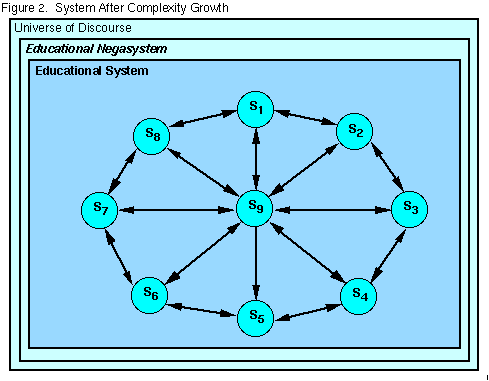 Educational Systems Theory
Educational Systems Theory Educational Systems Theory
Educational Systems Theory


#167. If educational system complexity greater than some value increases, then size increases.
#179. If educational system size increases and complexity growth is constant, then vulnerability increases.
#180. If educational system size increases and complexity growth is constant, then flexibility decreases.
#181. If educational system size increases and complexity growth is constant, then centrality decreases.
#188. If educational system size increases and complexity growth is constant, then state determinacy increases.
#194. If educational system size increases and complexity growth is constant, then toput increases.
#195. If educational system size increases and complexity growth is constant, then feedin decreases.
#196. If educational system size increases and complexity growth is constant, then feedout increases and change in feedout decreases.
#197. If educational system size increases and complexity growth is constant, then feedthrough increases.
#198. If educational system size increases and complexity growth is constant, then feedback decreases.
#199. If educational system size increases and complexity growth is constant, then regulation increases to some value and then decreases.
#200. If educational system size increases and complexity growth is constant, then compatibility decreases.
#201. If educational system size increases and complexity growth is constant, then efficiency increases to some value and then decreases.
 Go to SIGGS Home Page.
Go to SIGGS Home Page.